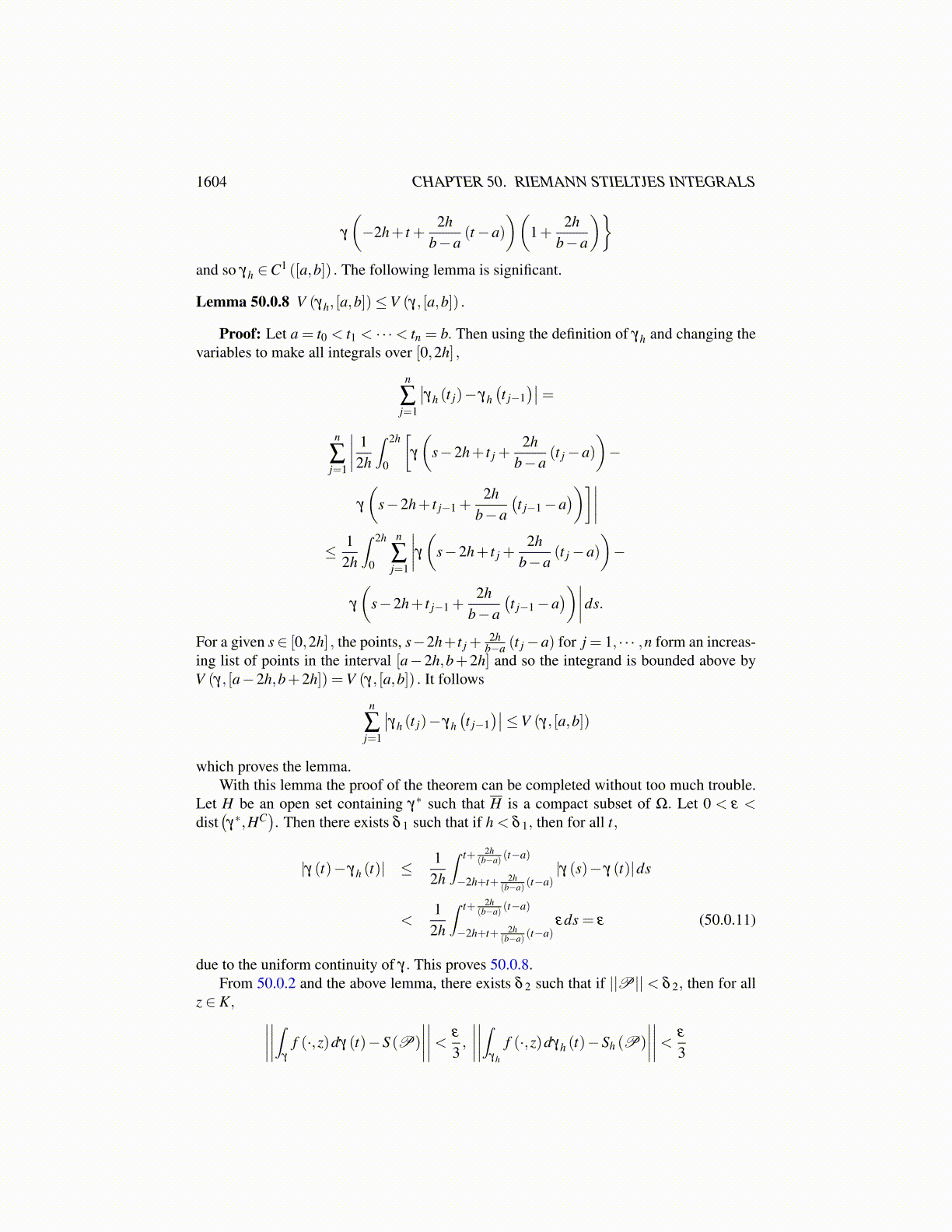
1604 CHAPTER 50. RIEMANN STIELTJES INTEGRALS
Clearly the extreme inequalities would be valid in 50.0.4 if Q had more than one extrapoint. You simply do the above trick more than one time. Let S (P) and S (Q) be RiemannSteiltjes sums for which ||P|| and ||Q|| are less than δ m and let R ≡P ∪Q. Then fromwhat was just observed,
|S (P)−S (Q)| ≤ |S (P)−S (R)|+ |S (R)−S (Q)| ≤ 2m
V (γ, [a,b]) .
and this shows 50.0.3 which proves 50.0.2. Therefore, there exists a unique complex num-ber, I ∈ ∩∞
m=1Fm which satisfies the definition of∫
γf dγ. This proves the theorem.
The following theorem follows easily from the above definitions and theorem.
Theorem 50.0.5 Let f ∈C (γ∗) and let γ : [a,b]→ C be of bounded variation and contin-uous. Let
M ≥max{|| f ◦ γ (t)|| : t ∈ [a,b]} . (50.0.5)
Then ∣∣∣∣∣∣∣∣∫γ
f dγ
∣∣∣∣∣∣∣∣≤MV (γ, [a,b]) . (50.0.6)
Also if { fn} is a sequence of functions of C (γ∗) which is converging uniformly to the func-tion, f on γ∗, then
limn→∞
∫γ
fndγ =∫
γ
f dγ. (50.0.7)
Proof: Let 50.0.5 hold. From the proof of the above theorem, when ||P||< δ m,∣∣∣∣∣∣∣∣∫γ
f dγ−S (P)
∣∣∣∣∣∣∣∣≤ 2m
V (γ, [a,b])
and so ∣∣∣∣∣∣∣∣∫γ
f dγ
∣∣∣∣∣∣∣∣≤ ||S (P)||+ 2m
V (γ, [a,b])
≤n
∑j=1
M∣∣γ (t j)− γ
(t j−1
)∣∣+ 2m
V (γ, [a,b])
≤ MV (γ, [a,b])+2m
V (γ, [a,b]) .
This proves 50.0.6 since m is arbitrary. To verify 50.0.7 use the above inequality to write∣∣∣∣∣∣∣∣∫γ
f dγ−∫
γ
fndγ
∣∣∣∣∣∣∣∣= ∣∣∣∣∣∣∣∣∫γ
( f − fn)dγ (t)∣∣∣∣∣∣∣∣
≤max{|| f ◦ γ (t)− fn ◦ γ (t)|| : t ∈ [a,b]}V (γ, [a,b]) .
Since the convergence is assumed to be uniform, this proves 50.0.7.It turns out to be much easier to evaluate such integrals in the case where γ is also
C1 ([a,b]) . The following theorem about approximation will be very useful but first here isan easy lemma.